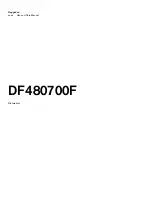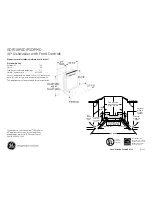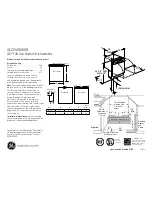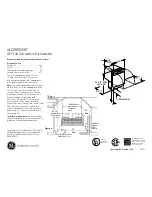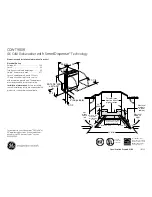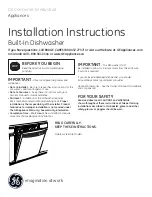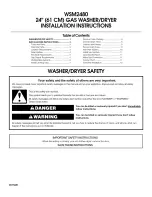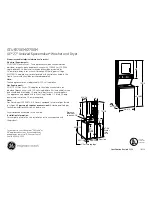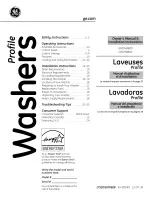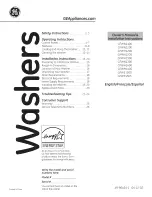
25
CAUSE
Use of incorrect
detergents
Incorrect amount
of detergent
Use of ineffective
detergents
Insufficient fill due to
low water pressure
Dishes do not drain
properly
Plastics
Water chemical reac-
tion with certain types
of glassware – usually
caused by some
combination of soft or
softened water,
alkaline washing
solutions, insufficient
rinsing, overloading
the dishwasher, and
heat of drying
Aluminum items
touching dishes
SOLUTION
Use recommended dishwasher detergents
only.
Follow recommendations for amount.
Heavy soil and/or hard water generally
require extra detergent.
Use fresh detergent. Store detergent tightly
closed in a cool, dry place. Discard lumpy
detergent.
Home water pressure should be 20 to 120
psi (138 to 828 kPa) for proper dishwasher
fill. A booster pump on the water supply
may be necessary if pressure is too low.
Dishes must have proper water drainage.
Do not overload. Follow instructions for
loading dishwasher. See the “Loading Your
Dishwasher” section on page 8. Use a liquid
rinse agent to speed draining.
Some plastics, due to material, may need to
be towel dried.
It may not be possible to prevent problem,
except by hand washing. To slow this
process, use a minimum amount of deter-
gent but not less than 1 tablespoon per
load. Use a liquid rinse agent and under-load
the dishwasher to allow thorough rinsing.
Silica film and etching are permanent and
cannot be removed. Use the Air Dry option.
Load aluminum items so that they will not
rub against dishes during washing. Do not
wash throwaway aluminum items in the
dishwasher because they may break down
and cause marking. Remove aluminum
markings by using a mild abrasive cleanser.
PROBLEM
Spotting
and filming
(continued)
Dishes do not
dry completely
Silica film or
etching
(silica film is a
white iridescent
deposit; etching
is a cloudy film)
Black or gray
marks on
dishes
continued on next page
S O L V I N G C O M M O N D I S H W A S H I N G P R O B L E M S































